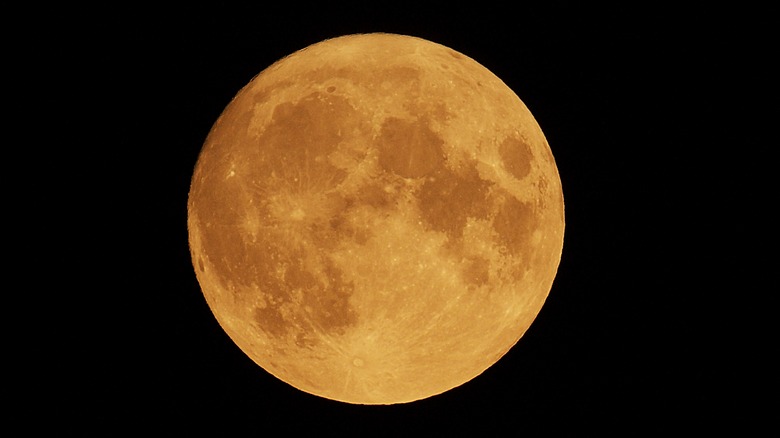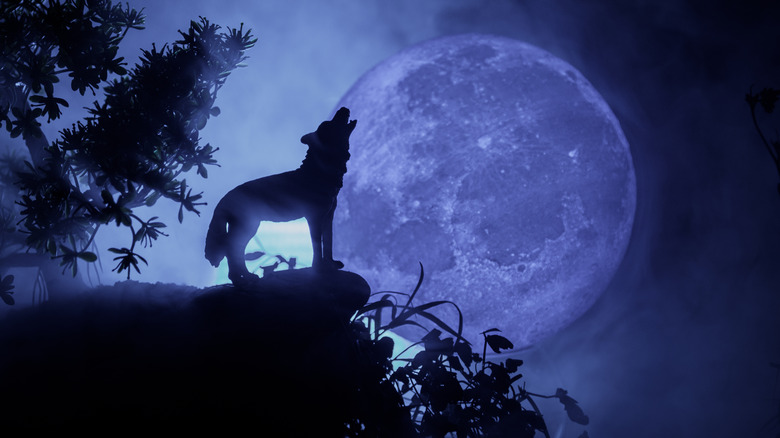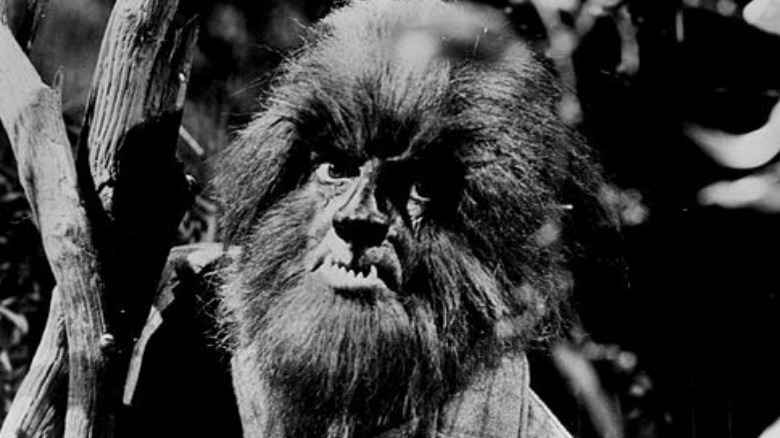How Likely Is It To See A Full Moon On Halloween?
Just as some people thoroughly embrace the aspects of Christmas all year 'round, the Halloween season has its devoted fans. Many warmly welcome the sudden resurgence of all the demented decor and monstrous merriment that presides over us for 31 days — or more — of festivities. Even Mother Nature herself seems to enter into the Halloween spirit. The most telling sign that Spooky Season is close on the horizon is the long-awaited changing of the Earth. As the leaves on the trees start to bronze and the wind in the air starts to carry a chilly crispness with it, we suddenly become enraptured with elemental nostalgia. Autumn's charm truly is a distinctive one.
If there's one thing that's especially majestic during the fall season, it's a big ol' full moon that hangs from the night sky like an amber chandelier. Unless you're a werewolf doomed to descend into a state of ravenous bloodlust, you likely look forward to the arrival of a full moon in autumn, and if you're lucky enough to see one bursting through the ethereal tapestry of blackness on the night of October 31, you know what it's like to really feel the spirit of Halloween move through you. However, according to Almanac, you shouldn't hold your breath, because a full moon happening on October 31 is an especially rare occurrence.
The spooky truth about a Halloween full moon
The Galveston County Office of Emergency Management in Texas reports that the eight phases of a lunar cycle repeat themselves every 29.5 days, and when you break it all down to the bare rudiments, a full moon is really only in total effect for a few moments of that time — when the moon is totally enveloped by the light of the sun (via Nine Planets). However, in a broader sense, you can observe a full moon for a series of days before it enters into its next phase, so you get a decent amount of time with the majestic monthly phenomenon that catches everyone's eye.
Still, the likelihood of seeing a full moon light up the sky on Halloween night is pretty slim, as Almanac reports. The last time it happened was in 2020, and it isn't projected to happen again for another 18 to 19 years. On the bright side (so to speak), if you're planning on going trick-or-treating this year, you won't have to worry about looking over your shoulder for the looming threat of hungry werewolves the whole time.
Okay, but why werewolves?
One can't help but wonder if the connection people draw between Halloween and full moons has something to do with the lunar phenomenon's reputation for inspiring lyncanthropy in people — becoming werewolves. After all, what thrill-seeking horror enthusiast doesn't want to believe that there are werewolves stalking the streets on the most diabolical night of the year? It's a scary thought, but a charming one if you have an appreciation for the macabre. According to Farmer's Almanac, the timeless legend of the wolfman can be traced all the way back to ancient Greece.
The myth is said to have originated from the Greek tale of Lycaon. Once upon a time, Lycaon tried to trick the great god Zeus into devouring the flesh of human beings, and as a penalty, the gods transformed him into a wolf for the rest of his life. There are also various accounts from historians like Ovid and Virgil of warriors turning into wolves on the battlefield and tearing their enemies to bits, though we can probably reduce those anecdotes to mere embellishments and exaggerations of exceptional combat stories. Tales like these in conjunction with a full moon's reputation for eliciting bizarre behavior in people gave pop culture gurus some savory material for books and movies over the years (per Farmer's Almanac).


